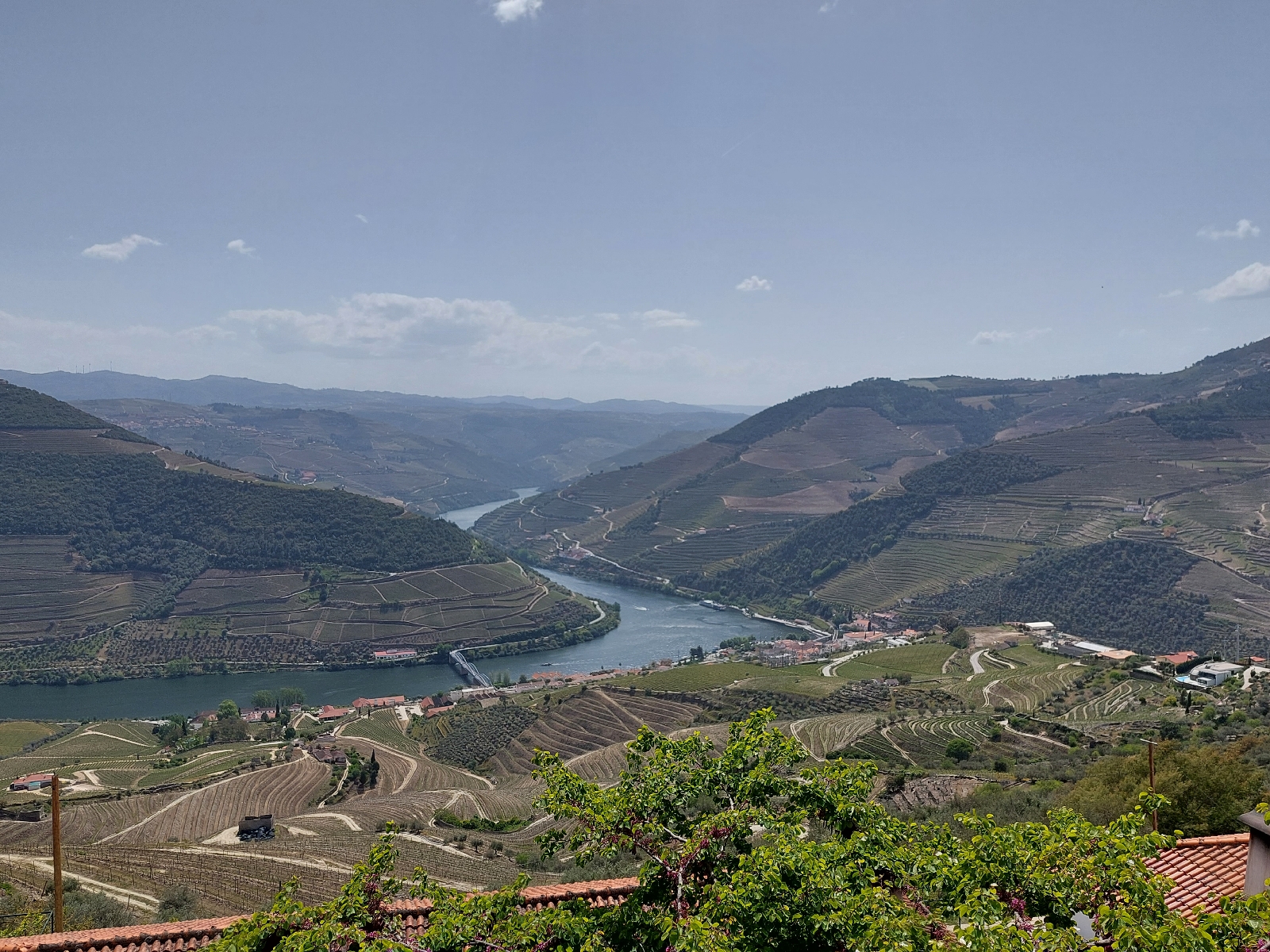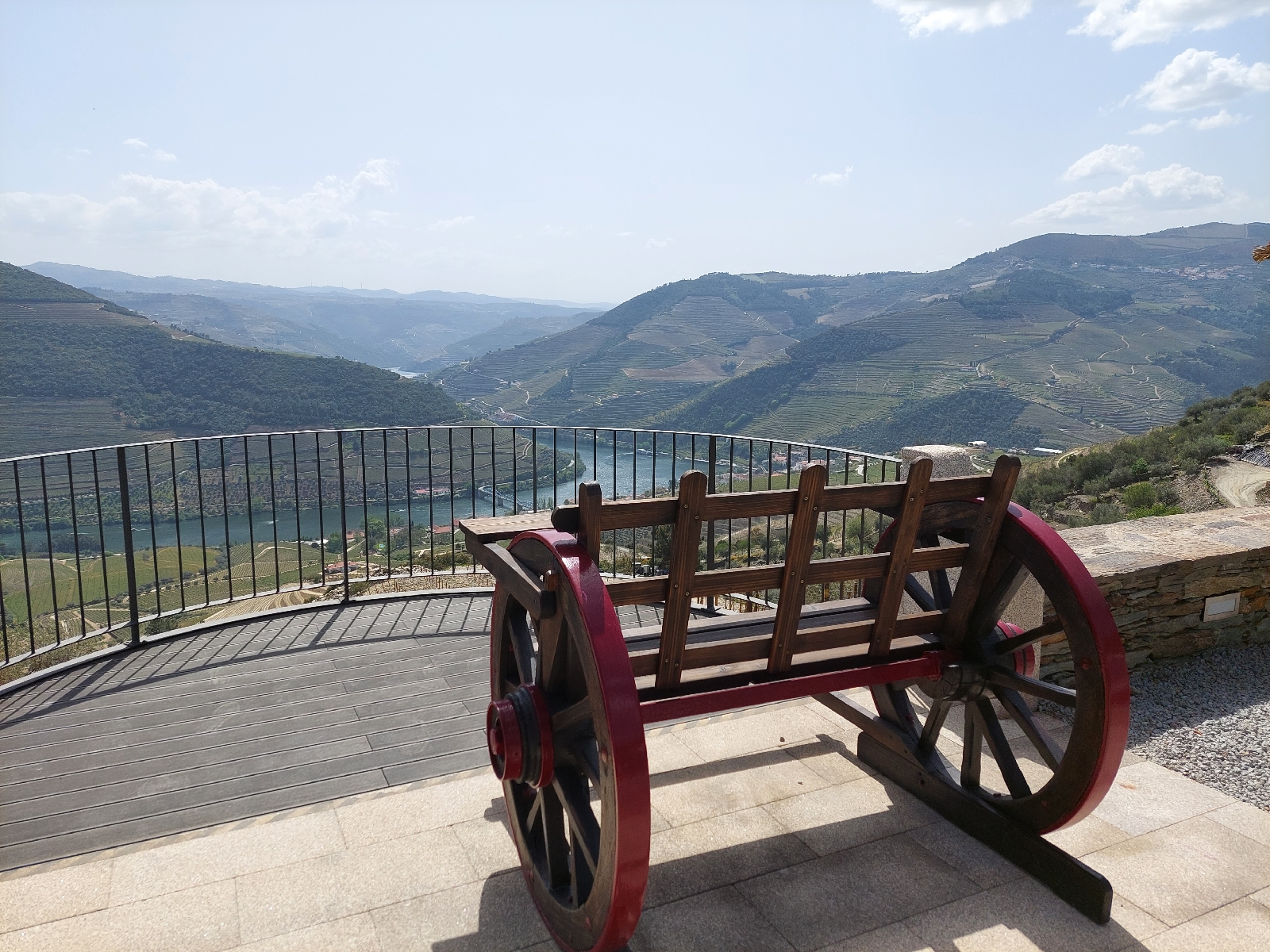We had a private tour led by a young man named Bruno and the experience was definitely a highlight of this trip. He chose two great wineries for the tastings and the restaurant he took us to for lunch was wonderful.
There is a lot of driving on narrow roads with no railing in the mountains. Bruno said that most of the roads were dirt until 2020 when they were paved using EU money Portugal received when they joined. It was a coincidence that the work was scheduled during a covid year but the lack of traffic made the job easier and also kept people working.
The first stop was at one of the larger wineries owned by 7 siblings. The sister in charge of running it pushed herself into the business at a time when only men ran wineries and she helped pave the way for other women. In fact, her father got so tired of her asking to stomp grapes, he finally let her...after the men left for the day.
The two wineries we visited still stomp the grapes because artificial feet machines do not have the same effect. There is a university in the valley that has a degree in wine production. Bruno said they have a very modern, liberal approach and are constantly conducting research on methodology as well as the product. The area is extremely hot in the summer which lasts longer than it used to because of climate change. Every day for 3 or more months, the temperature is 100 degrees or more. Because of their research, they hope they can continue the business despite the changes in weather patterns.
At the first winery, we tasted 4 types of port--one ruby, one white and two types of tawny. We also tasted their red and white wines and olive oil. Olive trees are often grown between grape vines to shelter the vines. The price of port increases the more aged it is but of course you can buy a bottle and keep it for 20 years before opening. The Valley has over 250 varieties of grapes and wine is made from a combination of different varieties.
Tasting at Quinta de Santa Eufemia
6 glasses per person
It was tempting to buy one of everything but the bottles are heavy and would be hard to pack. We did find out the distributors of the wines in the US and the different name used for the white wine. This is one of the few family-owned wineries left in the Valley. A corporation has bought up many of them. This winery had bottles to buy, of course, but also a nice sampler of 4 small bottles aged 10, 20, 30, and 40 years. It will be interesting to see how much the taste improves from 10 years aged to 40.
The old-fashioned way to plant vines in terraces has mostly been replaced by planting in vertical lines but both ways are seen in the Valley since the terraced ones are ancient. After a bug wiped out most of Europe's grape vines in the 1870s,
the vertical method following the natural shape of the mountains became popular. Replacement vines have American vine roots since they were immune from the bug. European vines are grafted on top. The vertical planting method produces more grapes because vines are not shading other vines and more vines can be planted because they're not bordered by the terraces. However, planting and harvesting is more difficult for the workers who have to walk up and down the mountains carrying up to 150 pounds of grapes on their backs. Bruno said he did that job when he was 14 and would never do it again.
Unfortunately, there are very few people who will work in the vineyards because it's strenuous work for low wages. Before many of the Eastern European countries were in the EU, young people would come in, work
for 5 years to get Portuguese citizenship so they could get EU passports and leave. Once the countries joined the EU, young people could bypass that step.
We ate lunch at a large, very nice restaurant named Torrao that seemed to be in the middle of nowhere but had plenty of customers. Bruno recommended dishes and did not steer us wrong. They serve a traditional cod dish that we haven't seen on other menus. It sounds terrible but it was delicious--cod covered in a layer of mayonnaise which is closer to what we call alioli and a big layer of mashed potatoes.
After lunch, we traveled the road that's been called the most beautiful in the world. It didn't disappoint. We stopped at the overlook to see what the BBC calls the best view in the world. It is stunning.
The second winery, Quinto do Jollato, we visited is small but they have a beautiful view of the Valley. We sampled their fresh almonds but they don't have enough to sell. They do sell Honey. We tasted their Port cocktail made of port, tonic and mint. Perfect for the summer.
Quinto do Jalloto has three overlooks of the Valley. These seats were "wagons" pulled by horses to transport the ladies, we were told.
Picture of stomping the grapes. 14 men on each side. This winery has a vat big enough for 7 people on each side. They stomp for 3 hours one day, 2 hours the next, 1 hour the third day. Then their legs are stained for 2 weeks.












No comments:
Post a Comment